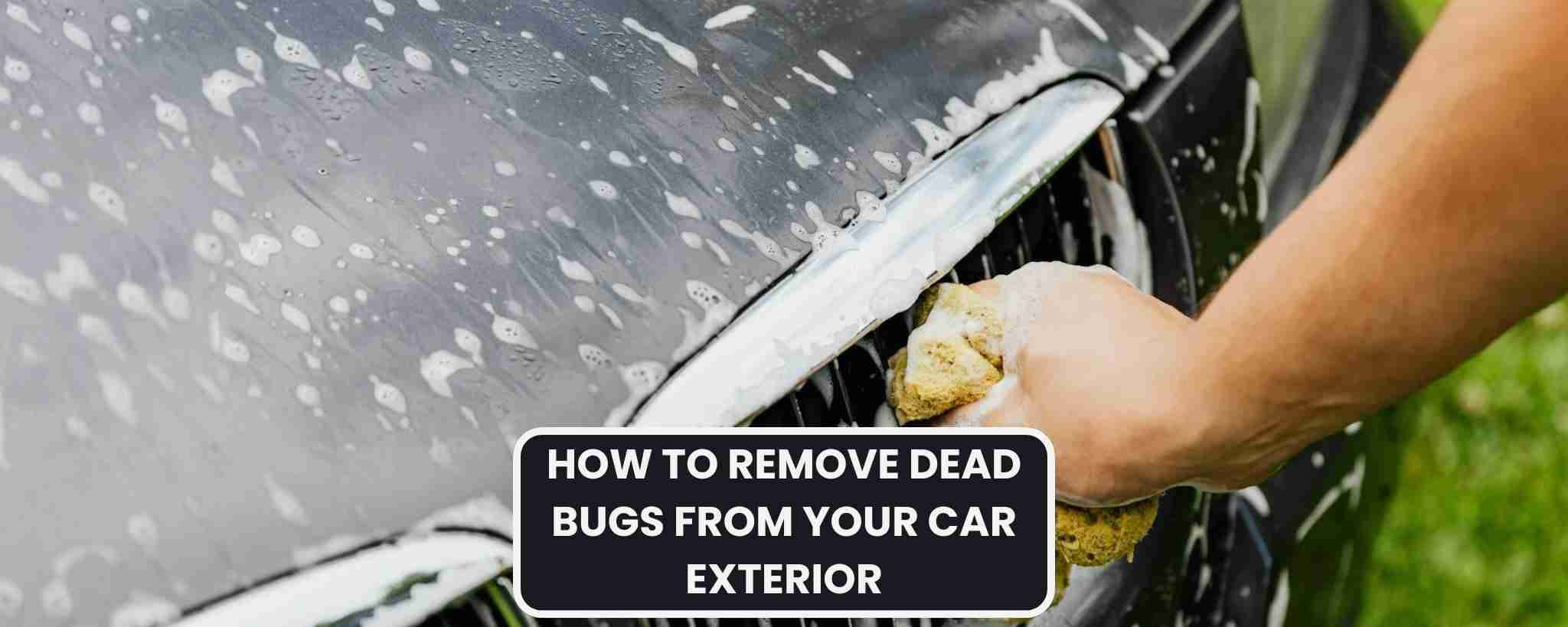How to Remove Bugs From Car Without Damaging Paint
Here are the best methods to remove bugs from the outside your car while maintaining the car’s paint and overall appearance. Learn more with Panda Hub!

Written by:
Parham Koukia
Reviewed By:
Editorial Team
Published: April 09, 2025
Updated: October 09, 2025
Use AI to summarize this article:
Summer is here, and along with summer comes the struggle of removing dead bugs from car exteriors that get hardened across the front of your car, around the bumper, headlights, and windshield. If these bug splatters are not removed properly, they can break down the clear coat, especially after hours of sun exposure or heat from the engine bay.
Most drivers don’t realize how quickly these stains begin to etch into the paint or how easily a bad scrub can leave fine scratches across the surface.
That’s why this guide focuses on how to remove dead bugs from the car without damaging the paint.
Step-By-Step Guide to Removing Dead Bugs From Car
Tools You’ll Need
- Clean microfiber cloth
- Two Buckets: One for soapy water and the other for rinsing
- Bug-specific cleaners: These are formulated to break down protein-based stains without harming automotive paint.
- pH-balanced Car Shampoo and Foam Canon
Step 1: Rinse and Preo-Soak the Affected Area
Rinse the car with cool water to loosen the debris. Target the front bumper, grille, side mirrors, and windshield, as these are the most common impact zones for insects.
Pre-soak with a foam shampoo or bug remover to soften hardened residue.
Note: Fresh bugs are easier to remove, but if you let the bugs be in the paint for a while, it can etch and damage the clear coat.
Step 2: Use a Gentle Car Shampoo or Foam Canon
Apply a pH-neutral car shampoo with lubricating agents using a wash mitt. Avoid harsh scrubbing and let the surfactants work for several minutes before rinsing.
This first wash helps to lift loose bug remains and grime from the car surface.
Step 3: Apply a Dedicated Bug Remover
Spray a high-quality bug remover evenly across the affected area.
Let it dwell as per the product’s label, usually 30 seconds to 2 minutes.
Use a soft microfiber towel or bug sponge to wipe the area gently. Apply minimal pressure and work in horizontal motions to avoid marring. Reapply product if needed.
Step 4: Rinse and Pat Dry with a Clean Towel
Rinse thoroughly to remove all product residue.
Use a clean, dry microfiber towel to pat the surface dry. Avoid air-drying as it may leave water spots, especially if the car is parked in direct sunlight.
DIY Solutions for Dead Bug Stain Removal
Baking Soda
Baking soda is alkaline, making it effective against acidic bug remains.
Mix four tablespoons of baking soda with a quart of warm water. Use a microfiber towel to apply the mixture in small sections, then rinse thoroughly to avoid residue buildup.
Dryer Sheets
While dryer sheets may loosen bug splatter, they contain fabric softeners and scents not designed for clear coats. If you choose to test this method, soak the sheet in warm water and test it on a small, inconspicuous area first.
Always follow with a wash.
Spray 'n Wash, WD-40, and Other Unexpected Fixes
Stain removers like Spray 'n Wash have been used successfully by some detailers for spot treatments.
WD-40 can loosen bugs but leaves an oily film that must be washed off immediately.
Spot-test any product before full application, and finish with a rinse and wax.
Baby Shampoo
Baby shampoo is usually gentle on paint and can be one of the best ways to remove dead bugs from your car paint.
Mix a small amount of baby shampoo with warm water and spray on stains. Gently scrub the area using a bug sponge or a soft cloth. The gentle formula of baby shampoo can help to get rid of bug residue without damaging the car paint.

What Not To Use on Car Paint
1. Vinegar
The internet is flooded with recommendations of using vinegar on car paint, but the acidic property of vinegar can damage the clear coat of your car and should never be used under any circumstances.
2. Abrasive Scrubbers
Avoid steel wool, magic erasers, or anything labeled as “scrubbing pads.” These can cut through the clear coat, leaving dull patches or micro-scratches on the car's exterior.
3. Undiluted Household Chemicals
Window cleaners containing ammonia, bleach-based products, or industrial degreasers are not suitable for automotive paint. They may remove bugs, but they also strip protection and can cause long-term damage.
Related Article: How to Remove Tree Sap from Car
What Do Car Detailers Use to Remove Bug Splats?
Professional detailers use a combination of specialized bug and tar removers, pH-balanced car shampoos, and microfiber tools to safely eliminate bug splatter without damaging the paint. Popular choices include citrus-based bug removers that break down protein-based residues, along with foam cannons to pre-soak the front fascia, mirrors, and bumper. For stubborn spots, detailers also use insect-specific sponges or mesh towels designed to lift debris gently.
After removal, they often follow up with a coat of wax or sealant to restore protection and make future cleanups easier.
Do You Need to Wax After Bug Removal?
Yes. Bug Removal process may strip away some protective wax from your car's exterior. We recommend reapplying a coat of wax to repel bugs and road debris and give your finish a smooth, sealed surface.

Parham Koukia
Lead Car Detailer / Operations Manager
With nearly 15 years of hands-on detailing experience, Parham has become a trusted authority in the auto care world. His work is regularly spotlighted in leading outlets like CNN, GoBankingRates, and Family Handyman. Parham likes to share his knowledge to offer in-depth tips on equipment selections, seasonal car care, and some secret car cleaning tips used by detailers in the real world!
Read more
